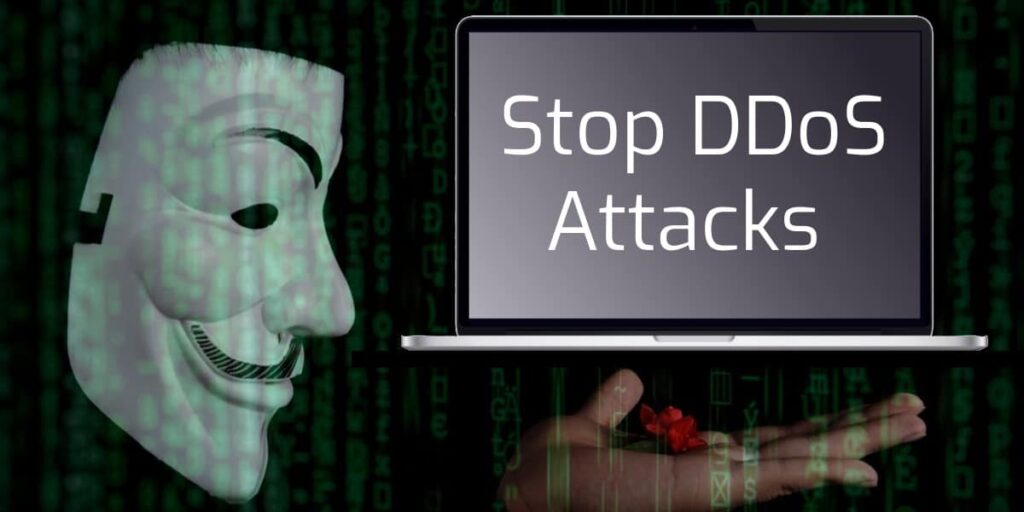
Can You Stop a DDoS (Distributed Denial of Service) Attack?
Last updated on June 23rd, 2022 at 04:25 am
A DDoS attack floods your system with unauthorized traffic, slows down your programs, and stops authorized users from accessing your platform. DDoS attacks also lead to missed revenue, discarded shopping carts, a bad reputation, and frustrated consumers.
Such security breaches are on the rise, which can be detrimental to your company and brand image if they cause considerable site downtime. While you can’t monitor when you’re under threat, implementing the steps described here may help you reduce the effect of the attack and help you stay protected from these attacks.
What is a DDoS Attack?
A DDoS attack occurs whenever an attacker directs a traffic stream to a network or database to overload the device and interrupt its ability to run. Such attacks are typically used to shut down the website instantly, which can last for weeks at a time, or sometimes worse.
The term Denial-of-Service indicates that the site or network would not be capable of serving traffic during the attack. And they are termed Distributed Denial-of-Service since this unlawful traffic is coming from thousands or even millions of other devices. Once it arrives from a specific source, it is recognized as a DoS attack.
DDoS attackers use a botnet (a set of several machines or Internet-enabled gadgets that have already been controlled remotely) to initiate an attack with malware. They’re called “Zombies.”
How to Stop a DDoS Attack
The common person wouldn’t have anything to stress about it, but the large companies are the primary focus. They may possibly lose millions of dollars due to the interruption incurred by the DDoS attack. Relatively small company owners may have suffered tremendously as well.
Any company with an internet presence needs to be completely ready for a possible DDoS attack at any moment.
Inform the security provider
In parallel with contacting members inside your company, you would also want to inform your security providers and undertake any action on their side to ensure they respond to the threat. Your security provider can be a dedicated security service, Internet Service Provider, or web hosting, provider.
Each service group features specific strengths and service reach. The internet service provider will help reduce the amount of harmful internet traffic accessing your site. In contrast, your web hosting company may significantly reduce your application’s effect and increase the capacity of your system.
Activate Countermeasures
If you already have some countermeasures, it’s time to enable these safety measures. One of the most effective solutions is the enforcement of IP-based Access Control Lists (ACLs) to prevent requests from arriving through attack routes. This is achieved at the point of the network router, which can typically be managed either by your system staff or by the Internet service provider. It’s a helpful strategy if the security attack or threat happens through some specific source or a limited number of sources. Besides that, if some cybercriminal is attacking from a wide range of IPs, then this strategy does not support it.
If the main target of the cyberattack is an interface or a web-based system, then you would have to restrict the total client connections at a time. This method is generally called rate-limiting, which is also the favored strategy among CDNs and web hosting services.
Dedicated DDoS security technology would offer you the largest scope of DDoS attacks. DDoS security strategies can be adopted either as a cloud-based scanning tool, as an application in your data center, or as a hybrid system integrating computer and cloud resources.
Detect DDoS attacks as early as possible
How would you find if the site is experiencing a DDoS attack? Based on the threat specification, identification can be challenging since specialized DDoS attacks can appear very close to valid traffic. There are, however, several main signs to be monitored.
- The appearance of HTTP Error 503 (Service Unavailable) is a fake promise you are under that DDoS attack.
- If you do not have automatic notifications, review your bandwidth map for the previous 24 hours. If it’s pretty steady with tiny spikes, you’re probably healthy right now.
- A rapid increase that lasts for an hour or more is a strong indication that there is a DDoS attack on the database.
NordVPN’s DDoS Protection
NordVPN had a few anti-DDoS databases before they disabled them and introduced DDoS security on all servers. This ensures that each of the 5,000 + servers that you should access through their platform is secured. So, you don’t have to activate it; neither would you need to check for specific databases.
By logging in to NordVPN, updating their applications on all of your gadgets, and connecting with one of their databases, you’ll be protected from a DDoS threat. NordVPN provides better security, and a service provider is an outstanding option when you’re searching for specialized internet privacy.
Conclusion
Your company must be equipped for and ready to manage a significantly larger amount of website traffic or database queries than you typically require. The only option is to eliminate the possibility of a DDoS attack by downloading good virus protection to shield you from malware. Another smart preventive mechanism is using a CDN and implementing a restriction on regular traffic.
If a DDoS attack is occurring and the server is inaccessible, bringing things back in order will be costly — website failure will affect both your company revenue and credibility. So ensure that your company is ready for any sort of attack at any point.
Read Dive is a leading technology blog focusing on different domains like Blockchain, AI, Chatbot, Fintech, Health Tech, Software Development and Testing. For guest blogging, please feel free to contact at readdive@gmail.com.
